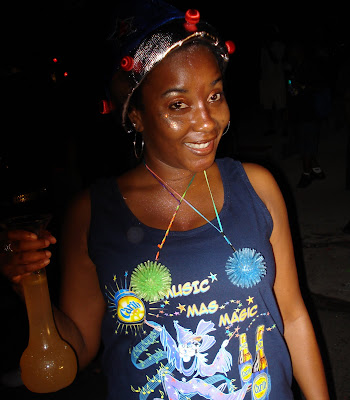 All in all a characterful vehicle. Produced at great cost for the US Army (isn't everything), it was allegedly given to flipping over when cornered hard, but it soldiered on reliably (pun intended). It gave me four years of trouble-free service. Sometime around 1989, with the salt damage from Telescope beach and other far-flung military adventures beginning to show, I decided to restore it. I spent a memorable few days taking it apart under the skeptical eye of various family members but didn't get very far in the restoration effort when I found a job in Barbados and left Grenada.
All in all a characterful vehicle. Produced at great cost for the US Army (isn't everything), it was allegedly given to flipping over when cornered hard, but it soldiered on reliably (pun intended). It gave me four years of trouble-free service. Sometime around 1989, with the salt damage from Telescope beach and other far-flung military adventures beginning to show, I decided to restore it. I spent a memorable few days taking it apart under the skeptical eye of various family members but didn't get very far in the restoration effort when I found a job in Barbados and left Grenada.How it came into my hands is mildly interesting. In the mid-eighties I struck up an acquantaince with this old guy called Baje (because he was a Bajan) who lived on the beach at Fontenoy, doing small engine repairs. After a few visits to his yard, I asked about the old vehicle under the tarp. (you have to read this in Bajan) "Maaarrnn, tha's is a complete army jeep" he said, "dem gi me dis for showing dem how to get tru de reef. I gine fix it up. I ent selling it fuh nuttin".
Brought into Grenada by the US Army during the invasion in 1983, they had partially disassembled the jeep and handed it over to Baje, with a good supply of spare parts. A peek under the tarp confirmed the strange and intriguing story, and drew me back to Baje several times over the next year.
The prospect of owning a genuine army jeep kept me awake at night. That model hadn't yet been released as surplus, so it was possibly the only one in private hands. My transport at that time was a 185cc trail bike. I never actually asked Baje if I could buy it, nor did I ever ask to see it again. But we were kindred spirits, interested in all thing mechanical.
A year later it was still there under the tarpaulin. One day we were sitting down contemplating an old lawn mower he was working on. "You wan tek the jeep and see wha you could do wid it?" "Yeah, ah wuddun mind" was my deliberate reply. He offered it to me for a price we both agreed was fair. A few months later it was reassembled and roadworthy. There followed tortuous negotiations with the licensing authority who wanted to know how they could be expected to license a vehicle which had no import papers (having entered the country via landing craft). Eventually I was allowed to pay a purchase tax to legalise it and then it could be registered. The best part of all was seeing it change from camouflage green to pink and grey zebra stripes, drawn by an artistic friend and hand painted with Berger 404 roof paint by me.
Yes, that is me, in orange polka dot shorts and grey top, looking very cool, circa 1987. I know, I fell off my chair laughing too.

But one does need to be sensible about which dreams to pursue, and with persons unnamed threatening to carry it off to the dump at Perseverance, a new home has been found for it. All bits collected together, it will soon be taken to a kinder home, hopefully to feel the road again, hopefully not in 20 years....












 This is part of a group which had come down from Balthazar in St. Andrews, it was Carnival Monday afternoon, and they were passing through St.Paul's (somewhat of a detour), intent on making their way into town without delay. This didn't stop them from asking me for cash, preferably US, according to one guy, since he had to travel to Barbados to get a visa and needed some travelling money.
This is part of a group which had come down from Balthazar in St. Andrews, it was Carnival Monday afternoon, and they were passing through St.Paul's (somewhat of a detour), intent on making their way into town without delay. This didn't stop them from asking me for cash, preferably US, according to one guy, since he had to travel to Barbados to get a visa and needed some travelling money. 









